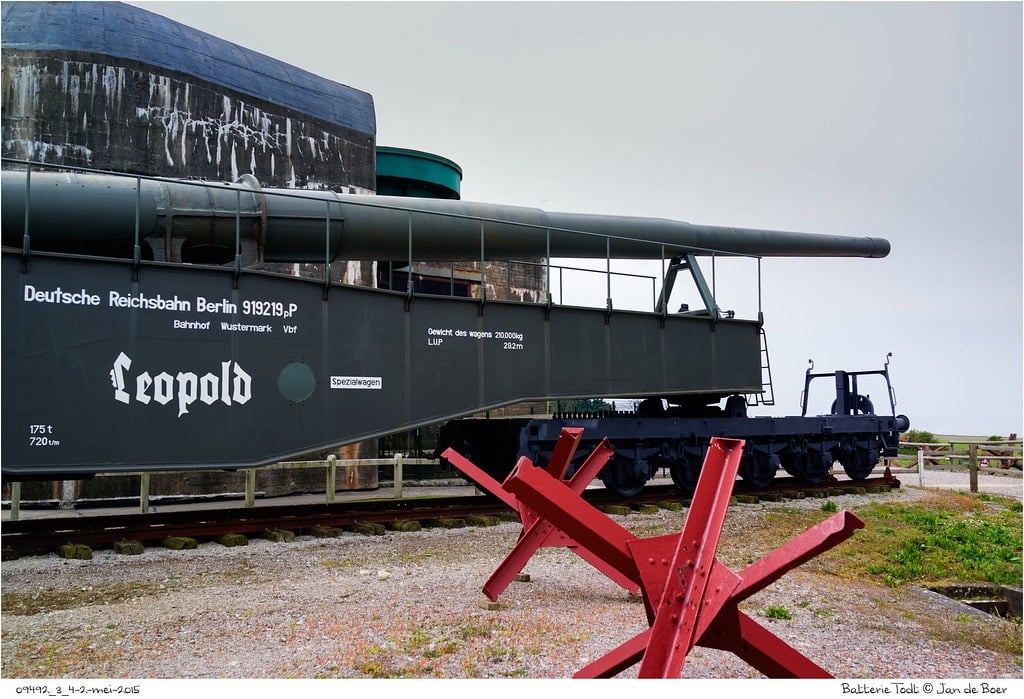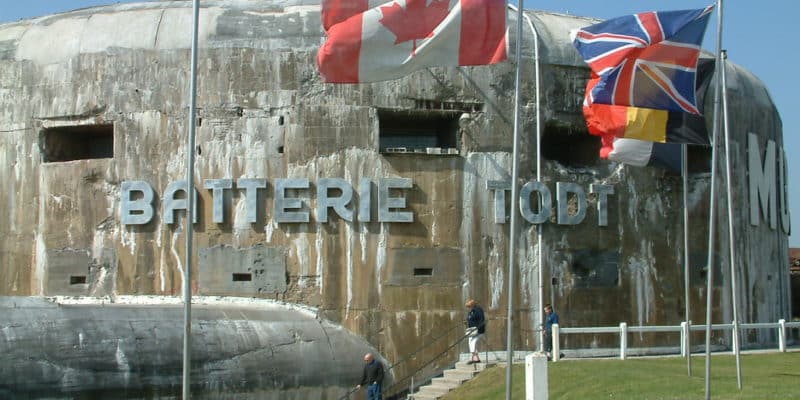Located in Audinghen in the Hauts-de-France region of France, the Musée du Mur de l’Atlantique is a must-see historical site that evokes the period of the Second World War. Immersed in the greenery of the Côte d’Opale, this fascinating museum offers a detailed insight into the history of this strategic region.
History of the Atlantic Wall
The Atlantic Wall, known as the “Atlantikwall”, was a network of defensive fortifications built by Nazi Germany during the Second World War. Spanning some 2,680 kilometers from the Spanish border to northern Norway, it was built between 1942 and 1944. The structure was designed to prevent an invasion by Allied forces on Western European soil.
It comprised a series of reinforced concrete bunkers, anti-tank ditches, minefields, observation posts and artillery batteries. The aim was to create an uninterrupted defense along Europe’s west coast. Built mainly by forced laborers, prisoners of war and contract workers, the Atlantic Wall was a massive undertaking that required enormous resources and manpower. However, despite its impressive size, the wall proved ineffective during the Normandy Landings on June 6, 1944, when Allied forces succeeded in penetrating German defenses and establishing a beachhead in Normandy, marking a decisive turning point in the conflict. Today, although many of its structures were destroyed in the post-war years, many sections of the Atlantic Wall still exist and can be seen along the coasts of Western Europe. These historic relics are silent witnesses to one of the darkest periods in 20th-century history, and serve as poignant reminders of the ravages of war.
The Atlantic Wall Museum at Audinghen
The museum is located on an authentic historic site: a former German battery, the Todt Battery. This military complex, built by the German occupation forces during the Second World War, was one of the largest and most powerful on the Atlantic Wall. With its four massive casemates, each capable of housing a 380mm cannon, the Todt Battery was a veritable concrete fortress. Today, the Todt Battery is one of the few World War II gun complexes that remains largely intact. One of the casemates has been converted into a museum, offering visitors an immersive experience into the history of the Second World War. The museum boasts an impressive collection of historical artifacts. Visitors can see up close massive artillery pieces, military vehicles, uniforms, and even personal items that belonged to the soldiers. Among the museum’s highlights is a K5 cannon, also known as a “railway cannon”, which was one of the most powerful in the German arsenal. However, the museum does not limit itself to exhibiting military objects. It also aims to educate visitors about the daily lives of the soldiers stationed at the Todt Battery and the impact of the war on local civilians. Through detailed exhibits and personal stories, the museum brings to life the dark realities of war, paying tribute to those who suffered and fought for freedom.

Todt battery
Visit the Atlantic Wall Museum
A visit to the Atlantic Wall Museum offers an immersive and educational experience. On entering the complex, visitors are immediately transported back in time, with the opportunity to walk through the original bunkers and tunnels. These massive, austere concrete structures give a real insight into the living conditions of the soldiers stationed there during the war. The marks of time and historical events are visible on the walls, adding to the authenticity of the experience. The museum’s interactive exhibits are another key element of the visit. Through a combination of multimedia presentations, detailed information panels and historical artifacts, visitors can understand not only the military aspect of the Second World War, but also the human and social impact of the conflict. Exhibits cover various aspects of life during the war, from the strategic role of the Opal Coast to the daily lives of soldiers and civilians.
The museum’s experienced guides are on hand to enrich your visit. They can answer all your questions, share anecdotes and little-known facts, and even guide you through some of the less accessible areas of the complex. Whether you’re a history buff, a student or simply a curious visitor, they’ll make sure you leave with a deeper understanding of the history of the Atlantic Wall. Finally, don’t forget to take in the breathtaking views of the North Sea from the site. The contrast between the natural beauty of the coast and the austere fortifications is a poignant reminder of the contrast between peace and war.
Museum location
B.T.
